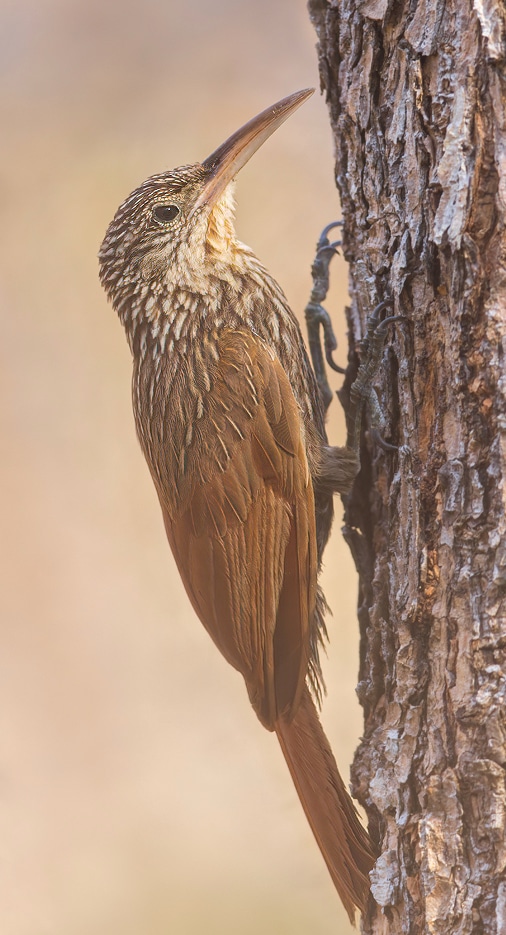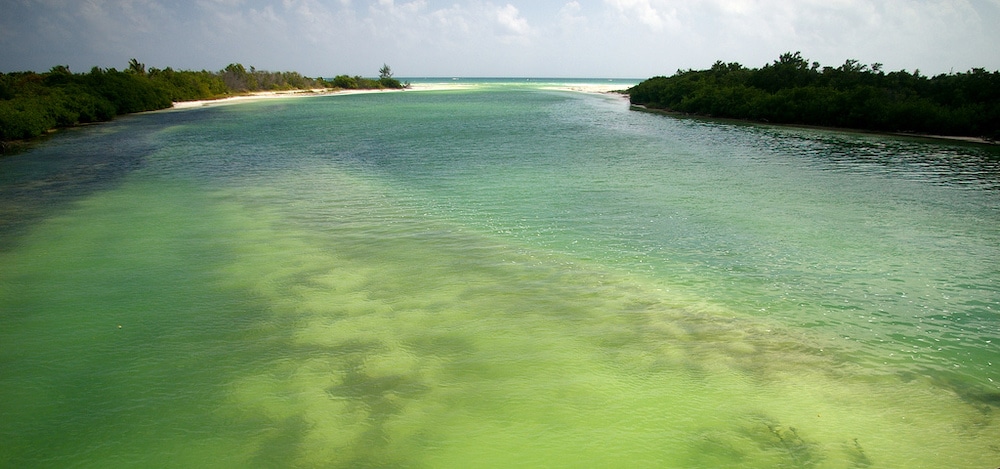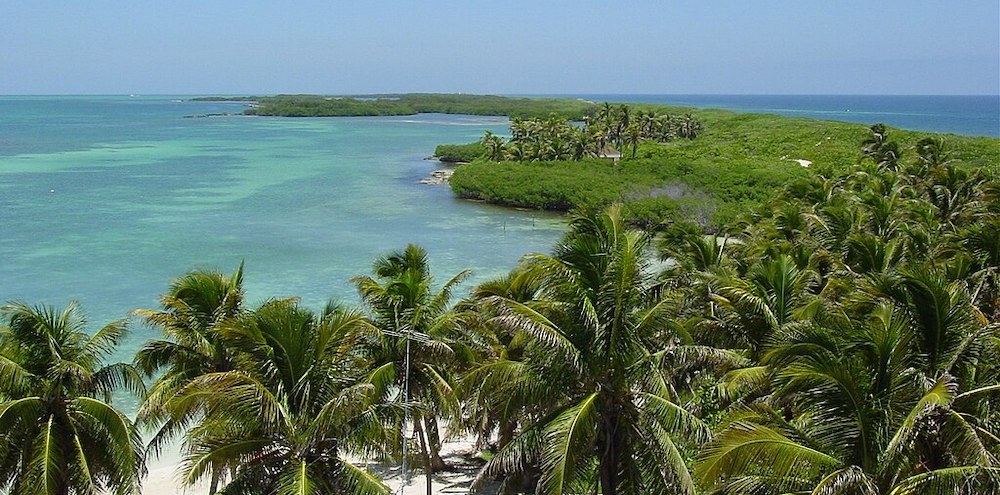Free and Sovereign State of Quintana Roo

Quintana Roo is one of the 31 states which, with Mexico City, constitute the 32 federal entities of Mexico. It is located on the eastern part of the Yucatán Peninsula and is bordered by the states of Campeche to the west and Yucatán to the northwest, and by the Orange Walk and Corozal districts of Belize, along with an offshore borderline with Belize District to the south. As Mexico’s easternmost state, Quintana Roo has a coastline to the east with the Caribbean Sea and to the north with the Gulf of Mexico. The state covers nearly 45,000 km2 (over 17,000 square miles). It is divided into 11 municipalities, and its capital city is Chetumal although the popular coastal resort of Cancún is its largest city. The state has a population of around two million people, half of whom live in the Cancun conurbation. There are many little Mayan towns throughout the state.
Quintana Roo has the islands of Cozumel and Isla Mujeres as well as the ancient Maya ruins of Chacchoben, Cobá, Kohunlich, Muyil, Tulum, Xel-Há, San Gervasio and Xcaret. The Sian Ka’an biosphere reserve is also located in the state. The state-wide population is expanding at a rapid rate due to the construction of hotels and the demand for workers from Yucatán, Campeche, Tabasco, and Veracruz.

Sian Ka-an Biosphere Reserve – ©Tim Gage CC BY-SA 2.0 via Wikimedia Commons
Much of the state has a tropical wet and dry climate while the island of Cozumel has a tropical monsoon climate. The mean annual temperature is 26 °C. The hottest months are April and August, in which the average high is 33 °C, while January is the coldest month with an average low of 17 °C. Extreme temperatures can range from a low of 10 °C in the coldest months to 36 °C in the hottest months. The state averages 51 inches of rain annually, which falls throughout the year, although June to October are the wetter months. The state is frequently hit by severe hurricanes due to its exposed location.
Birding Quintana Roo
The Yucatán Peninsula is one of the most forested areas of the world in terms of biotic mass per hectare. However, anthropological, biological and governmental experts have determined that it is ‘facing a faunal crisis’. Many medium to large game animals are disappearing due both to hunting and habitat loss. While its population is relatively small, Quintana Roo is experiencing a population influx and increased tourism that is increasing the pressure on the plants and animals native to the area.
There are four generalised ecosystems in Quintana Roo – tropical forests, savanna, mangrove forests, and coral reefs. One of the by-products of traditional and large-scale agriculture is the creation of additional habitats, such as second growth forests and fields/pastures. Tourism has caused Quintana Roo to become famous around the world in the last thirty or so years for its beaches, coastline, and cenote sinkholes. The coastline is considered one of the best manatee habitats in the world. However, biodiversity has decreased drastically in the last fifteen years.

©Peter Maas CC BY-SA 2.5 via Wikimedia Commons
Isla Contoy National Park

©Suwanosejima, CC BY-SA 4.0 via Wikimedia Commons
Inland, the vegetation is mainly low and medium rainforest, with a large area of mangroves and some savannah. The whole of the state is still rich in both marine and land wildlife; including part of the second largest coral reef in the world. A large Biosphere reserve has been established where many animals and plants find shelter from development. The main protected areas are: Siankaán, Holbox, El Eden, Puerto Morelos, Cozumel reefs and Isla Contoy where ecotours are available so one can enjoy the wildlife.
Also affected by the loss of habitat from both agriculture and development, birds are one of the region’s most varied animal assets. Hundreds of species reside in Quintana Roo permanently, with hundreds of others either wintering there or using it as a stopover on the long migration to and from South America. As a result, more and more birders come to the area annually in search of the rare and unexpected, often holidaying in Cancun with their non-birding partners.
-
Siankaan Biosphere Reserve
WebsiteSatellite ViewSiankaán was established as a Biosphere Reserve in 1986 and incorporated into UNESCO`s list of natural world heritage sites in 1987. Covering more than 1.5 million acres along the central coast of the State of Quintana Roo, it is one of the largest protected areas of Mexico. The reserve is composed equally of semi evergreen tropical forest, wetlands & savannas and marine habitat.The Yucatan peninsula has over 527 bird species in 62 families of which 12 are endemic with 4 subspecies, 2 morphs and 14 hipotetical registers. Siankaán itself is home to more than 345 bird species, including over 1 million wintering migratory songbirds from the US and Canada and the rare Jabiru stork.The challenge in the area is to promote rational and sustainable use of the natural resources that is compatible with the conservation of the reserveand at the same time beneficial to the local inhabitants; integrating environmental policy into regional development planning.
-
Kenneth Johnson
| info@ecotravelmexico.com
https://ecotravelmexico.com
-
Number of bird species: 537
(As at June 2024)
Number of endemics: 2
Cozumel Emerald Chlorostilbon forficatus
Cozumel Thrasher Toxostoma guttatum
-
Avibase
PDF ChecklistThis checklist includes all bird species found in Quintana Roo , based on the best information available at this time. It is based on a wide variety of sources that I collated over many years. I am pleased to offer these checklists as a service to birdwatchers. If you find any error, please do not hesitate to report them. -
eBird
PDF ChecklistThis checklist is generated with data from eBird (ebird.org), a global database of bird sightings from birders like you. If you enjoy this checklist, please consider contributing your sightings to eBird. It is 100% free to take part, and your observations will help support birders, researchers, and conservationists worldwide.
-
Birds of Mexico & Central America
| By Ber Van Perlo | Princeton University Press | 2006 | Paperback | 336 pages, 98 col plates' b/w illustrations, b/w distribution maps, colour maps | ISBN: 9780691120706 Buy this book from NHBS.com -
Mexico: Birds – Quintana Roo, Yucatan, Campeche
| By Robert Dean & Mark Wainwright | Rainforest Publications | 2012 | Unbound | 13 pages, colour illustrations, 1 colour map | ISBN: 9780984010745 Buy this book from NHBS.com
-
Pronatura Península de Yucatán
Facebook PageOur mission is to conserve the flora, the fauna and the priority ecosystems, promoting the development of the society in harmony with Nature.
-
BR Sian Ka'an
WebsiteSatellite ViewA sublime area of natural beauty, Sian Ka'an is home to thousands of species of flora and fauna, which is why the region became a designated Biosphere Reserve in 1986. A year later, Sian Ka'an was declared a World Heritage Site by the UNESCO and it remains the largest protected area in the Mexican Caribbean. Possibly the most astonishing part of the Yucatan peninsula, it is located 2 hours south of Cancun near the small town of Tulum. -
NP Arrecifes de Cozumel
InformationSatellite ViewThe Cozumel reef system is part of the Mesoamerican Barrier Reef System, the second largest coral reef system in the world. Even though almost the entire island of Cozumel is surrounded by coral reefs, the park only encompasses the reefs on the south side of the island. -
NP Isla Contoy
InformationSatellite ViewFour species of turtle find a safe haven for nesting on the beaches of the island, namely the loggerhead turtle, Green turtle, Hawksbill turtle, and the leatherback turtle. The reserve is also a sanctuary to approximately 152 tropical marine birds, like the frigate bird, brown pelican, and the double-crested cormorant. -
NP Reef of Puerto Morelos
InformationSatellite ViewImagine a place where the sky merges with the sea in an endless palette of blues, where you can explore underwater wonders, and where every corner invites you to connect with nature. Welcome to the Puerto Morelos Reef National Park (in Spanish: Parque Nacional Arrecife de Puerto Morelos). This guide will take you through its mighty biodiversity, its numerous activities, and how you can contribute to its preservation. -
NP Tulum
InformationSatellite ViewThe park contains trhe biosphere reserve of Sian Ka'an. -
NR El Eden Ecological Reserve
InformationSatellite ViewWelcome to the Home on the Web for the El Eden Ecological Reserve. Here you can learn about research projects in progress at the reserve, available facilities, and details of the different habitats of the Yucatan Peninsula…
-
Quintana Roo Rare Bird Alert
SightingsThe report below shows observations of rare birds in Quintana Roo.
-
BirdQuest
Tour OperatorSOUTHEAST MEXICO – Birding in the Land of the Mayas, from the Yucatan to Veracruz -
Birding Cancun
Local Tour GuideBird Watching Cancun Mexico -
Birding with Steven
Local Tour GuideThe Yucatan Peninsula is a birders paradise as home for around 550 different bird species, more than 50% of all species of Mexico. We have bird watching excursions in great spots like mayan ruins, local villages, natural parks, mangroves, jungle and biospheres such as Rio Lagartos and Sian Kaan. -
Ecocolors
Local Tour OperatorExplore the fascinating Maya World, refuge of great biodiversity, exhuberant jungles, the second largest coral reef in the World, natural springs (cenotes); the most important archeological sites of the ancient Maya and impressive colonial cities - This unique eco-tour is specially design for bird watchers. We will be able to visit the main protected areas in theYucatan peninsula such as Sianka`an, Holbox, Coba, and El Eden, as well as Guatemala and Belize rainforest. Mexico has around 1,040 different bird species, just in the Yucatan peninsula there are 509 different species in 62 families, from which 12 are endemic, with 4 subspecies, 2 morphos and 14 hipotetical registers. Belize and Guatemala have also more than 550 species of birds. -
MexicoKanTours
Local Tour OperatorWonderful introduction to the birds of the Yucatan -
Motmot Birding Tours
Local Tour OperatorBirding trip from Cancun, Riviera Maya, Playa del Carmen, Tulum, Cozumel Island, Río Lagartos... -
WINGS
Tour OperatorMexico: The Yucatan and Cozumel
-
2016 [02 February] - Gabor Orban
PDF ReportWe saw our first endemic birds: Yucatan Jay, Orange Oriole and Rose-throated Tanager. Our list grew rapidly with Green and Brown Jays, Bronzed Cowbird, Hooded Oriole, Smooth-billed Ani, Mangrove and Yellow-throated Vireos, Grey-collared Becard, Black-throated Green Warbler, Black-and-White Warbler, Aztec (Olive-throated) Parakeets, Red-throated Ant-Tanager, Great Kiskadee, musical Melodious Blackbird, Yellow-bellied and Social Flycatcher and a swift glimpse of a Squirrel Cuckoo. -
2016 [08 August] - Ross & Melissa Gallardy
PDF ReportBirding the Yucatan Peninsula is very straight forward. All of the birding spots are easily accessible, the roads are wide, paved, and in great condition, and people (away from the super touristy areas) are very friendly. Although it took us 10 days to cover this area, a dedicated birding trip covering all areas could be completed in a few less days... -
2017 [11 November] - Chris Benesh & Cory Gregory
ReportWe had a lot to be thankful for on such a fun tour of Cozumel and the Yucatan Peninsula. We enjoyed an array of colorful and fascinating birds, awesome Mayan cultural sites, gorgeous scenery, and even some good Mexican cuisine. The weather was great, the birding was superb (~230 species worth!), and the group was downright fun. -
2018 [10 October] - Dom the Birder
ReportI recently took a short non-birding break to Tulum, on the coast about 75 minutes south of Cancun Airport. I say “non-birding”, but any birder will tell you that there is no such thing as a non-birding vacation! -
2019 [01 january] - Peter Collaerts
PDF ReportYucatan has a lot of endemics and regional endemics, and on top of that, many North American wintering birds. We recorded 261 species, including all possible known endemics at the time. -
2021 [06 June] - Zoothera Birding - Mexico Coast to Coast
ReportSo we began with a whistle-stop tour of The Yucatan, kicking off in Cozumel Island where we cleaned up with Ruddy Crake, Yucatan Woodpecker, Cozumel Emerald, Cozumel Vireo and Western Spindalis. Following an overnight stop we frove right to the south and visited the fabulous Calakmul Mayan ruins, notching up an awesome nightbirding session with Yucatan Poorwill, Yucatan Nightjar, Middle American Screech-Owl, Northern Potoo and Common Pauraque, with aCentral American Tapir as a bonus. Daytime birding was much more relaxed with 50+ Ocellated Turkeys along the road, a single Great Curassow and Mayan Antthrush. Heading north towards Valladolid we nailed Rufous-breasted Spinetail, Green-backed Sparrow and Rose-throated Tanager. Rio Lagartos was brilliant with Mexican Sheartail, Yucatan Bobwhite, Yucatan Wren, Lesser Roadrunner and Yucatan Gnatcatcher to round off a wonderful 5 days. -
2022 [07 July] - Jeff Mann
ReportLast weekend I traveled to Cancun, Mexico for a short stay over Fourth of July. Traveling as birder is always exciting because of the chance to see new birds you can’t see at home. -
2022 [08 August] - Jack Bucknall
PDF ReportI should start this trip report by making it clear that (as my wife kept telling me) this was not by any means a birding trip, it was actually our honeymoon – I thought it would be usef -
2023 [03 March] - Mike Moore
PDF ReportMy girlfriend Lynda and I spent two weeks exploring the Yucatan peninsula, taking in the food, culture, historical sites, and, of course, the bird life. Our trip was not designed to be a quick mop-up of the key bird species, and our pace allowed us to experience much more of what the Yucatan has to offer. We met interesting people, indulged in much food and drink, swam in some amazing cenotes, were mesmerized by ancient ruins, and still managed to encounter all but one (foiled by the Yucatan Gnatcatcher) of our main target birds. What follows is an account of our time in this wonderful corner of Mexico
-
Baldwin's Guest House
AccommodationWhat a wonderful place to stay. Your accommodations and hospitality are first class
-
Ride Into Birdland
BLOGBird photography travels in the Yucatan Peninsula on a classic BMW F650 motorcycle… A bilingual blog (English-Spanish) about bird photography and bird observation in the Yucatan Peninsula, Mexico. Created by writer-photographer Ivan Gabaldon.

